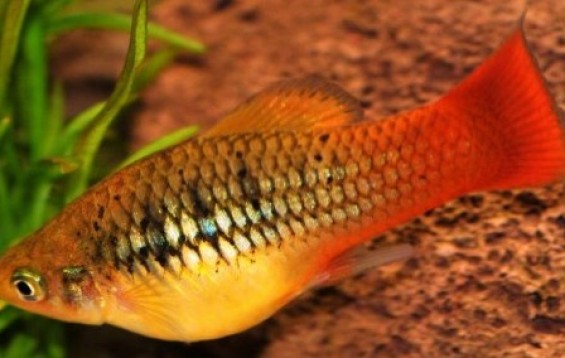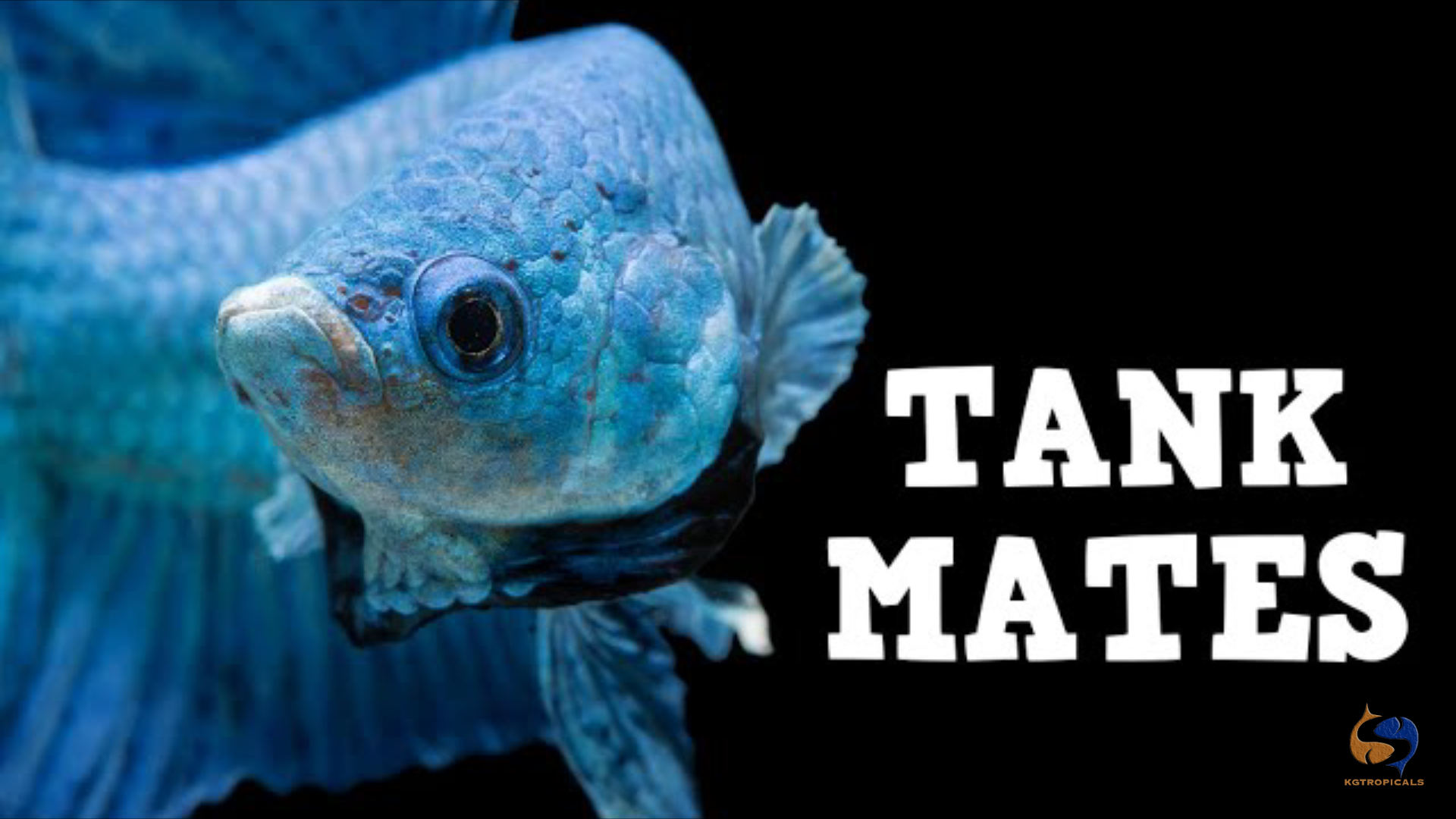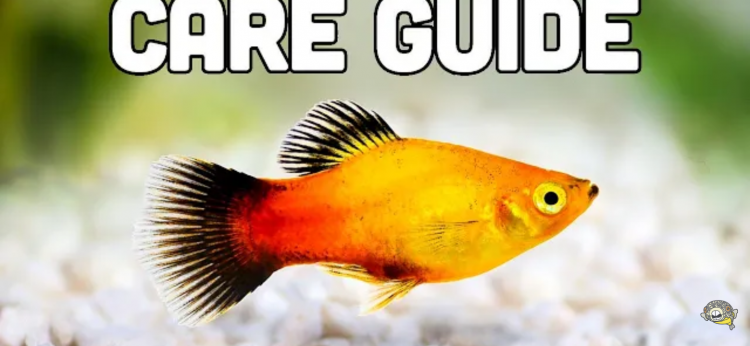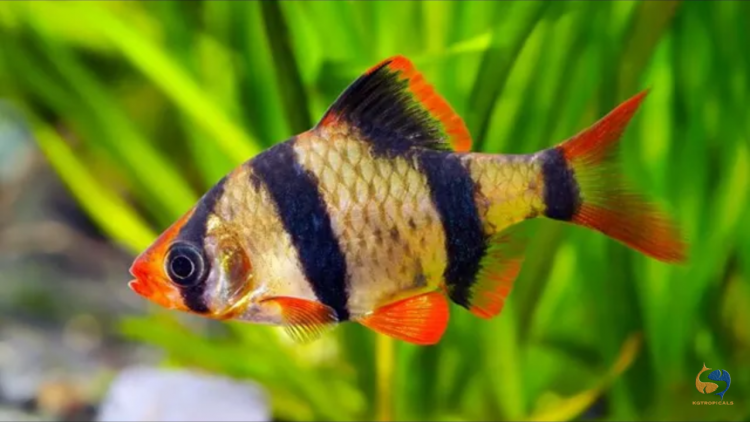- Name:
Variable Platies
- Family: Poeciliidae
- Species: Platies
- Scientific Name: Xiphophorus variatus


General info about Variable Platies
These fish are slim and short. In the wild they are olive with black markings and in captivity there are several different color morphs like blue, gold and black. Females can reach up to 3 inches while males only reach up to 2 inches. To keep these fish in captivity water pH should be between 7.0 and 8.2 and water temperature should range from 68°F to 79°F. The tank should be densely planted and it should have open areas for swimming and floating vegetation. They can be kept in community aquariums with equally peaceful species, also, they should be kept in groups of their own with more females than males. A 10 gallon tank is the minimum recommended for a group of 5.
Variable Platies Diet & Nutrition
This species is omnivorous. In the wild it feeds on invertebrates, plant matter and detritus. In captivity it can be fed with prepared foods and with frozen or live foods.
Determining Sex of Variable Platies
Males are smaller than females.
Breeding & Spawning Variable Platies
Besides keeping both males and females in the same tank, nothing else is needed to have them breed, however, if they are in a community tank, the young should be removed to prevent them from being eaten. They are livebearers, their gestation takes 4 to 7 weeks.
Variable Platies Origin
This species is native to the Atlantic coast of Mexico however this species can be found in other countries like Colombia, Costa Rica and Singapore due to being introduced there.
Acclimating Variable Platies
The water in which these fish are packaged is different from the water in the tank, since these fish are extremely sensitive to water conditions the acclimation process is very important. This process should never be rushed. Aquarium lights should be off for at least the first 4 hours of the fish in the new tank and it should not be fed in the first 24h. There are two acclimation methods: Floating Method and the Drip Method.
Floating method - the aquarium lights should be off and lights in the room should be dim, the bag in which the fish is should be placed in the surface of the water to float for about 15 minutes, this allows the water in the bag to adjust to the water in the tank. The bag should then be cut under the knot and the top edge of the bag should be rolled down one inch, then ¼ cup of the aquarium water should be added to the bag, this step should be repeated every 4 minutes until the bag is full, then half the water of the bag should be discarded and the bag should be put to float again and ¼ cup of the aquarium water should be added to the bag every 4 minutes until the bag is full. Afterwards, the Discus can be moved into the aquarium.
Drip method – the aquarium lights should be off and lights in the room should be dim, the bag in which the fish is should be placed in the surface of the water to float for about 15 minutes, this allows the water in the bag to adjust to the water in the tank. The bag contents should be poured into a 1 gallon bucket that has never been cleaned with any chemicals, the fish should be enterally submerged. A siphon, using airline tubing, should be set up and a drip line should run from the main aquarium to the bucket. Several loose knots should be tied in the airline tubing to regulate flow. Sucking the end of the airline tube that goes to the bucket will begin a siphon, the flow should be regulated to 2 to 4 drips per second. Once the water in the buckets doubles, half should be discarded and the process should be repeated until it doubles again. Afterwards, the fish can be moved to the aquarium.
Original Detail
| Name | Species | Family | Scientific Name | More Detail | Added by |
|---|---|---|---|---|---|
| Variable Platies | Platies | Poeciliidae | Xiphophorus variatus | These fish are slim and short. In the wild they are olive with black markings and in captivity there are several different color morphs like blue, gold and black. Females can reach up to 3 inches while males only reach up to 2 inches. To keep these fish in captivity water pH should be between 7.0 and 8.2 and water temperature should range from 68°F to 79°F. The tank should be densely planted and it should have open areas for swimming and floating vegetation. They can be kept in community aquariums with equally peaceful species, also, they should be kept in groups of their own with more females than males. A 10 gallon tank is the minimum recommended for a group of 5. |
PalaciosAn |
Changed by users
| Submitted Date | Submitted By | Status | Action |
|---|




